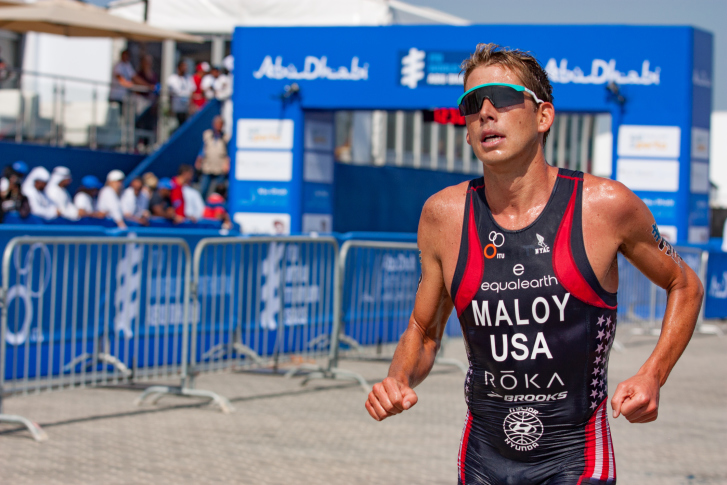In the “YES” corner

Glenn Kearney is the head sports nutritionist at Etixx UK and has previously worked with UK Athletics.
There’s a lot of talk about hitting “the wall” in marathon running. Does it actually exist or is it a figment of the imagination?
It exists. “The wall” is the term used to describe the physiological symptoms of running low on muscle glycogen. You can store approximately 2000Kcals in glycogen (delivered via carbohydrate) in both the liver and muscles, which is enough to sustain up to two hours of medium-intensity effort in trained individuals. However, once muscle and liver glycogen stores are depleted, the body will rely on fat almost exclusively for energy, which is quite inefficient in untrained individuals, the resulting effect of which is reduction in the muscles ability to function normally and a feeling of quite extreme fatigue.
What’s the difference between “hitting the wall” and just being understandably tired towards the end of a marathon?
Fatigue is normal in all athletes, trained or not. Consistent effort over a prolonged period will cause small tears in the muscle fibre and, over time, these will become sore. However, running carb-low is a different physiological reaction: the feeling of effort from contracting and expanding the muscle with low to zero glycogen. You have literally run out of fuel to support running at that pace, and pacing correctly is absolutely key to finishing your marathon running instead of walking. Effective training and nutrition can ensure you avoid the wall, but general fatigue will always set in.
Can the wall be avoided? If so, how?
Yes, you can avoid the wall. First things first, it’s about training at a level to prepare you for the effort. Starting well fuelled is important, too: even if you’ve eaten well the night before, liver glycogen will have been depleted overnight and so topping up either with a good breakfast or, if an early start, a high energy-load drink. Carbohydrate drinks and/or gels will also provide necessary carbohydrates and, in the case of the former, hydration.
Elite runners don’t appear to hit the wall, yet they seemingly take on very little fluid or gels during the race. Doesn’t this suggest that hitting “the wall” is a bit of a myth?
It’s probably more of a myth that elite runners don’t take on carbs during the race. Each will have bottles positioned at several points around the course and most will be filled with a carbohydrate-based drink. Some will also have gels attached with rubber bands to the side. Don’t forget also that their pre-race prep doesn’t consist of getting up early to travel across a city and then wait for an hour or two in the cold. This build-up to many big city marathons will naturally deplete energy before you’ve even reached the start line. All this makes race-day nutrition vitally important for the amateur runner.
In the “NO” corner
 Roger Kerry is an associate professor in physiotherapy and rehabilitation science at the University of Nottingham.
Roger Kerry is an associate professor in physiotherapy and rehabilitation science at the University of Nottingham.
There’s a lot of talk about ‘hitting the wall’ in marathon running. Does it actually exist or is it a figment of the imagination?
It exists in the sense that consistently people report an experience with similar characteristics: “My legs felt like lead”; “It felt like a ton weight on my back”, etc. However, defining it as an absolute and discrete phenomenon is really difficult. Most traditional theories related the experience to muscle-glycogen depletion, but there is more to it than that, including significant cognitive components. With this in mind, I would say it falls somewhere between actually existing and being a figment of the imagination.
What’s the difference between hitting the wall and just being understandably tired towards the end of a marathon?
These two phenomena are very much related; you could think of ‘hitting the wall’ and becoming ‘just tired’ on a continuum of fatigue, if you like. However, it’s not just the energy side that is important here. The brain has a critical role. A series of studies examining long-distance performance in elite athletes led Alan St Claire Gibson and colleagues (including Tim Noakes) to develop a model of fatigue where the brain is central to governing pace. The brain responds to the onset of energy depletion and other sensory stimuli by governing the amount of muscle fibres that can be recruited, which in-turn reduces pace. Fatigue is simply (but importantly) the associated emotion to this event. ‘Hitting the wall’ seems to be the brain forcing us to slow down to protect ourselves.
Can the wall be avoided? If so, how?
Yes, given that many runners do not experience it. It seems that fasting runs during early stages of a marathon programme can help train the body to perform in low-muscle-glycogen states. However, the cognitive dimensions are critical once again. Studies have shown that the onset of the wall is sooner in runners who internalise thoughts that distract them from the run, e.g. over-focusing on a specific aching muscle. ‘The wall’ can be delayed with the conscious focus on external and associative thoughts, e.g. focusing on split-times or positive monitoring of physical state (technique, posture, etc). The wall does exist, in some senses. However, myths around it being either ‘inevitable’ or ‘avoided with carbo-loading’ can be washed away with a review of the scientific thought behind this phenomenon.
Is the wall avoidable only through the use of energy gels or other sports nutrition?
Nutrition is of obvious importance. Whether this has to be in the form of energy gels or ‘specialist’ sports drinks is not so important. These are just one form of access to nutrition. There are, of course, many forms of carbohydrate: dried fruit, nuts, pretzels, jelly babies, natural energy bar recipes, glucose in water etc. These would most often work out cheaper than manufactured gels and drinks.







